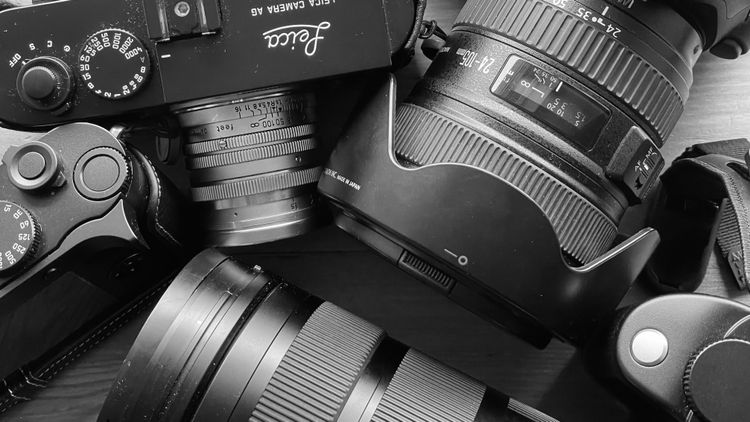Peak Design Travel Tripod
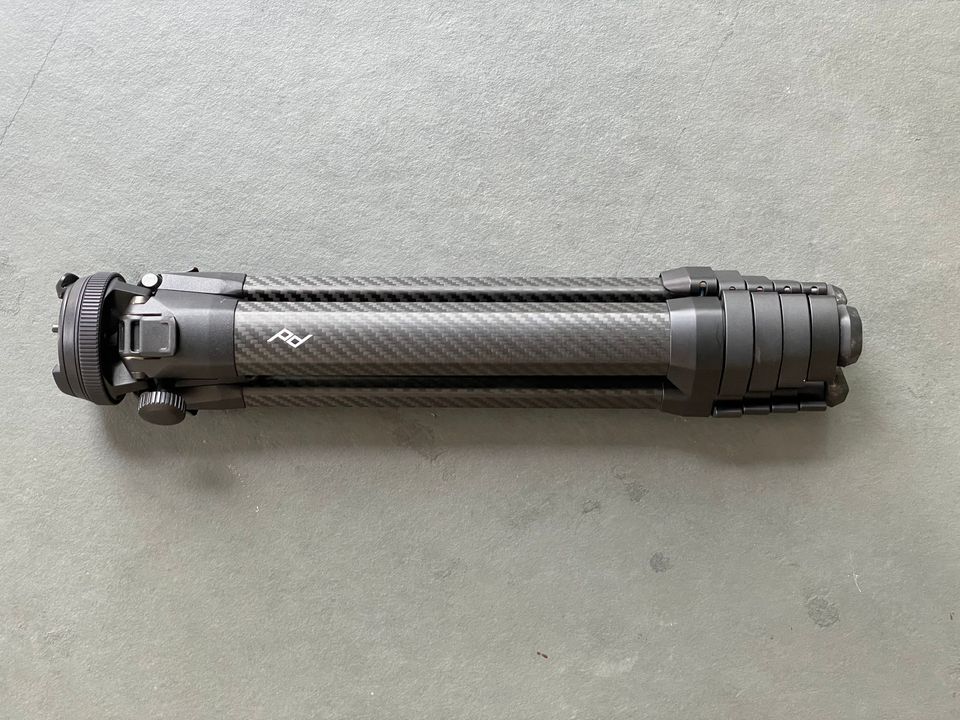
Back in 2019, I was one of the thousands of people who backed Peak Design on Kickstarter for their Travel Tripod.
I’ve been a long-time Peak Design fan and own more of their gear than I really want to admit. I use their bags (backpacks and everyday slings), pouches, straps, mounts and other bits and pieces. The common theme is that they’re all well-designed, reliable, and just generally work. It’s hard to overstate just how unusual that is. I’ve owned a huge amount of gear over the years, but Peak Design stuff has seldom, if ever, let me down.
However, that didn’t make it an automatic choice to back the Travel Tripod on Kickstarter. For one thing, I own quite a few tripods; a mix of Manfrotto and Really Right Stuff. Although the bulk of the photography I shoot has been on a tripod, they’re not something I tend to get excited about. They’re a tool, and most of what I have does the job. I’m pretty careful with my gear, but it’s unavoidable that your tripod is going to bear the brunt of any fieldwork. It'll end up in mud, streams, sand, salt water and worse. In short, I’m not sentimental about tripods.
However, with all that, I’ve never really owned a tripod that was easy to take with me on holiday, or just on those days when I wasn't sure I'd need one. Certainly, not one that was an obvious choice to pack Just In Case.
When I saw the Travel Tripod for the first time, it definitely caught my interest. It packs down into a fairly small package and doesn’t weigh much (under 3lbs). It’s RRS plate compatible, will fit comfortably inside a travel bag and can hold up to 20lbs of load.
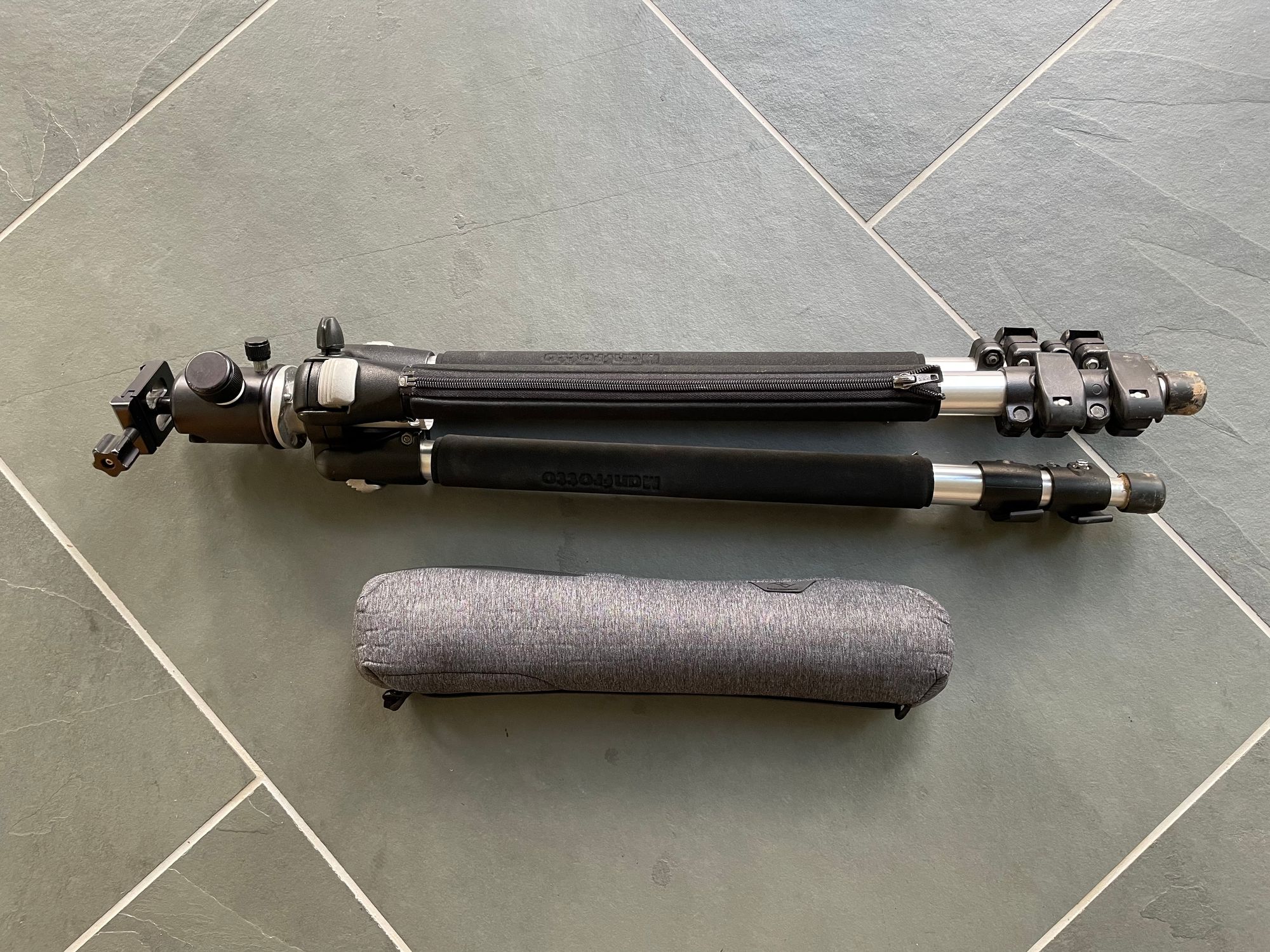
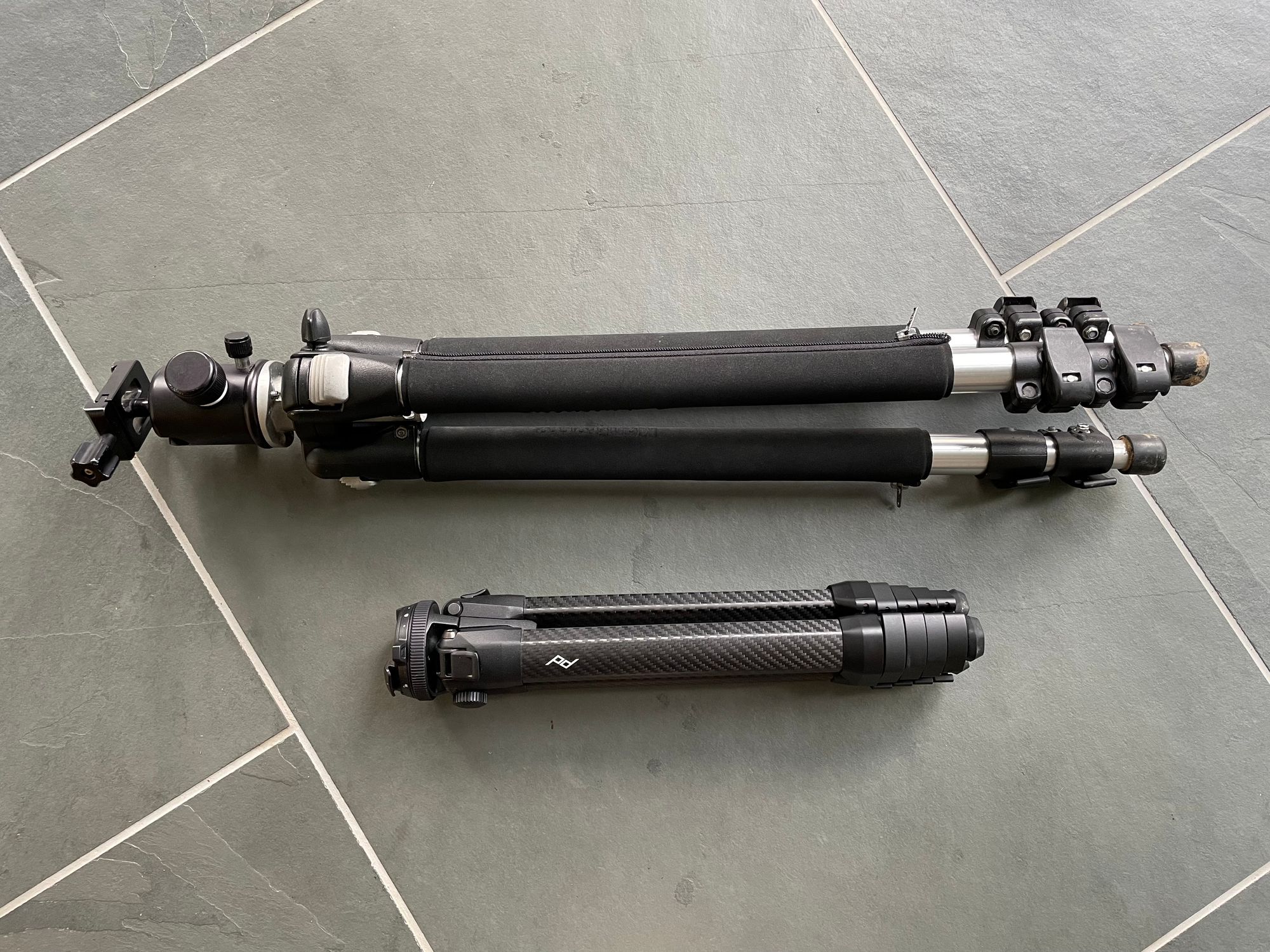
The downside is that it has a lot of leg sections. A lot. Most of the tripods I own have three sections because I hate fiddling with legs. I can usually get close enough to the ground with three sections if the leg angle will splay out to a wider point, as I almost always swap the center column for something shorter.
The Travel Tripod has five sections, all adjusted with cams. This is, of course, so that the tripod can be packed down into the minimum size, but it was a concern. As I was worried about weight, I backed the carbon fiber model on Kickstarter. It’s also available in aluminium, which is cheaper and weights about 1/2lb more.
When the tripod arrived, I was struck by just how small it actually is. When packed into its grey fabric travel pouch (which, for those of you who care, is the same fabric as their bags), it’s got a real sense of solidity to it. As you’d expect for the price, but it does feel like a well-machined and premium product.
My original plan was to remove the integrated ball-head and use the third-party adaptor to mount a “real” ball-head on it. However, it quickly became clear that this would make the tripod a lot more cumbersome to pack. As a result, I decided to see if I could live with the slightly weird head.
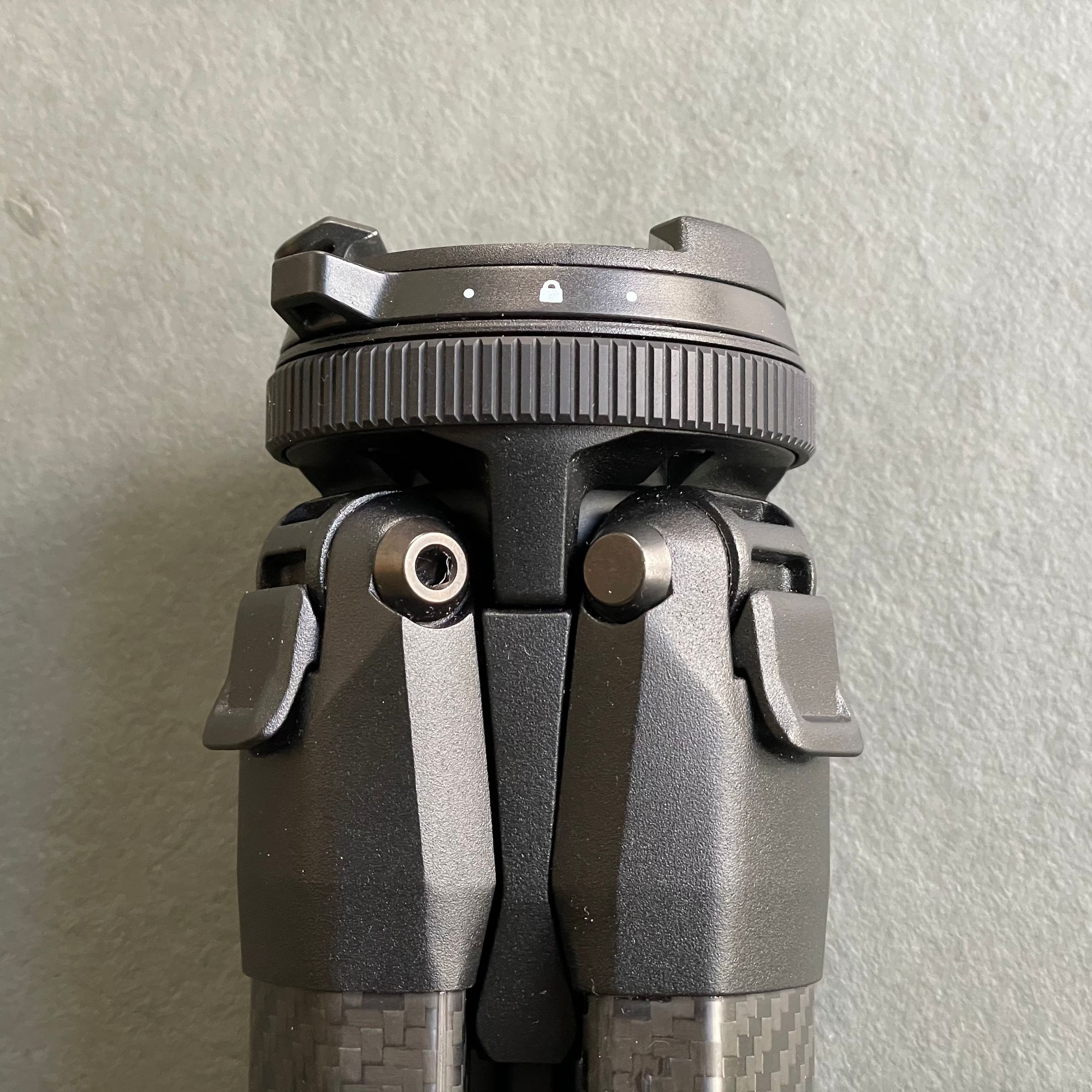
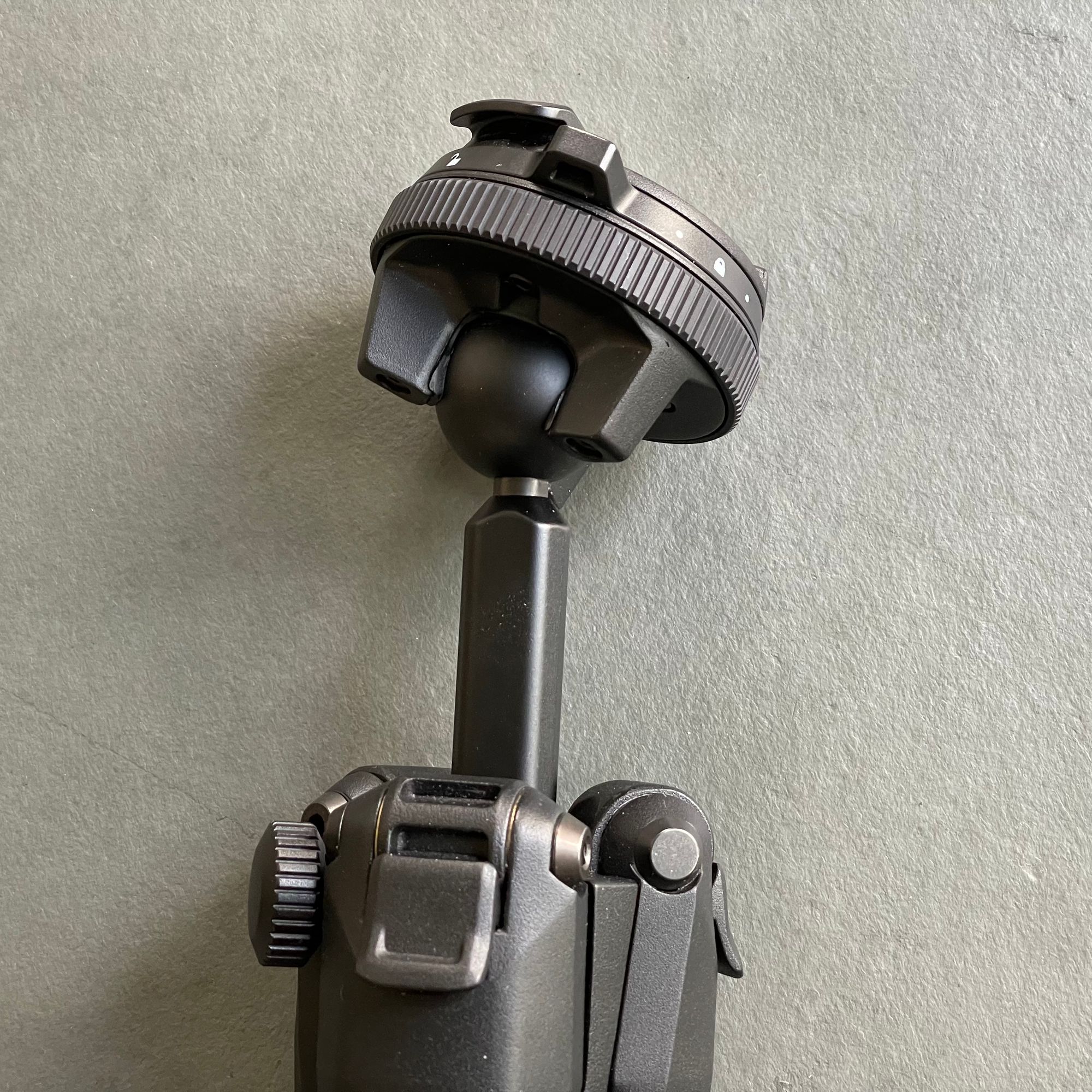
The head has two adjustments on it. A tabbed lever, that locks the RRS plate and a knurled tension ring, that adjusts the friction on the head. A design feature that you quickly have to get used to is that, when packed, the head sits down into the top of the leg pivots a bit. This sets the head into a fixed, flat position. To adjust the angle of the head, you have to loosen the center column, pull up the head by an inch or so, and tighten. Not the end of the world, but it did get some expletives from me the first time until I twigged (Read the instructions? For a tripod? 😬).
The head has a reasonable range of motion. At the loosest friction setting, it still has some friction, so it’s not completely floppy when released. It will even go to 90 degrees in one of the orientations, although I think anyone who wants to spend any time shooting portrait on a tripod should just bite the bullet and buy an L mount.
The plate clamp also has two anti-slip stops on it. These, theoretically, stop the plate from slipping out of the clamp if it’s slightly loose (and preventing a fairly expensive accident). The anti-slip stops make sense if you’re using the standard Peak Design square plate, but I don’t make much use of them, as I tend to favor using camera-specific RRS plates. However, I found that with both of the stops in place, my standard RRS plates wouldn’t fit as they’d foul one of the stops. Removing one stop did the trick.
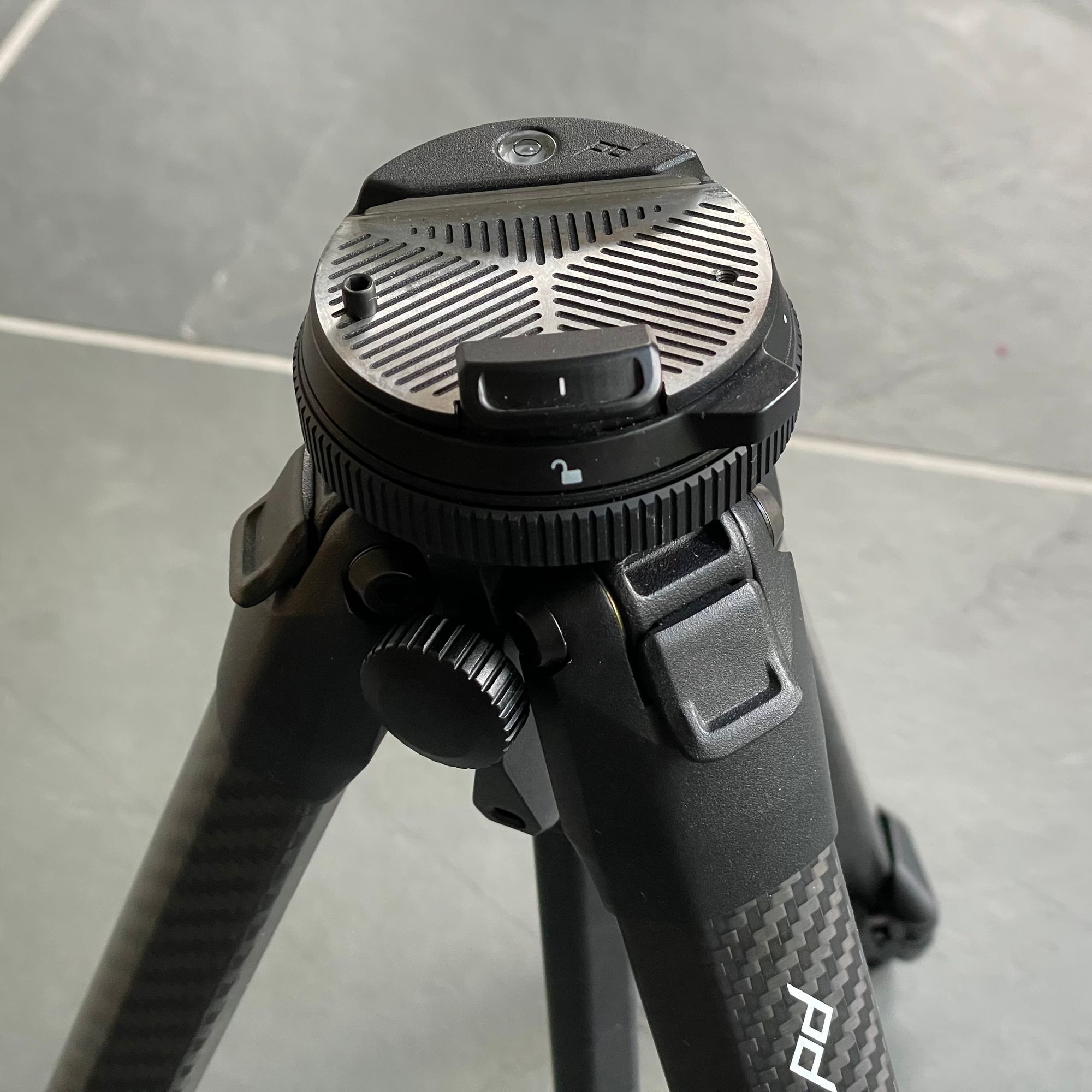
The head clamp does hold RRS plates fairly firmly, but the tabbed lever mechanism to lock the plate in place is fairly non-standard. I do find myself checking the tab nervously to make sure the plate is in place, but it’s not as visually re-assuring as a simple lever QR clamp. I’ve got used to it, but it’s not my favorite bit of the design.
There is a short, fixed standard threaded center mount for a conventional tripod heads. I use this with a Sirui fluid head for wildlife scope duty and occasional light video work.
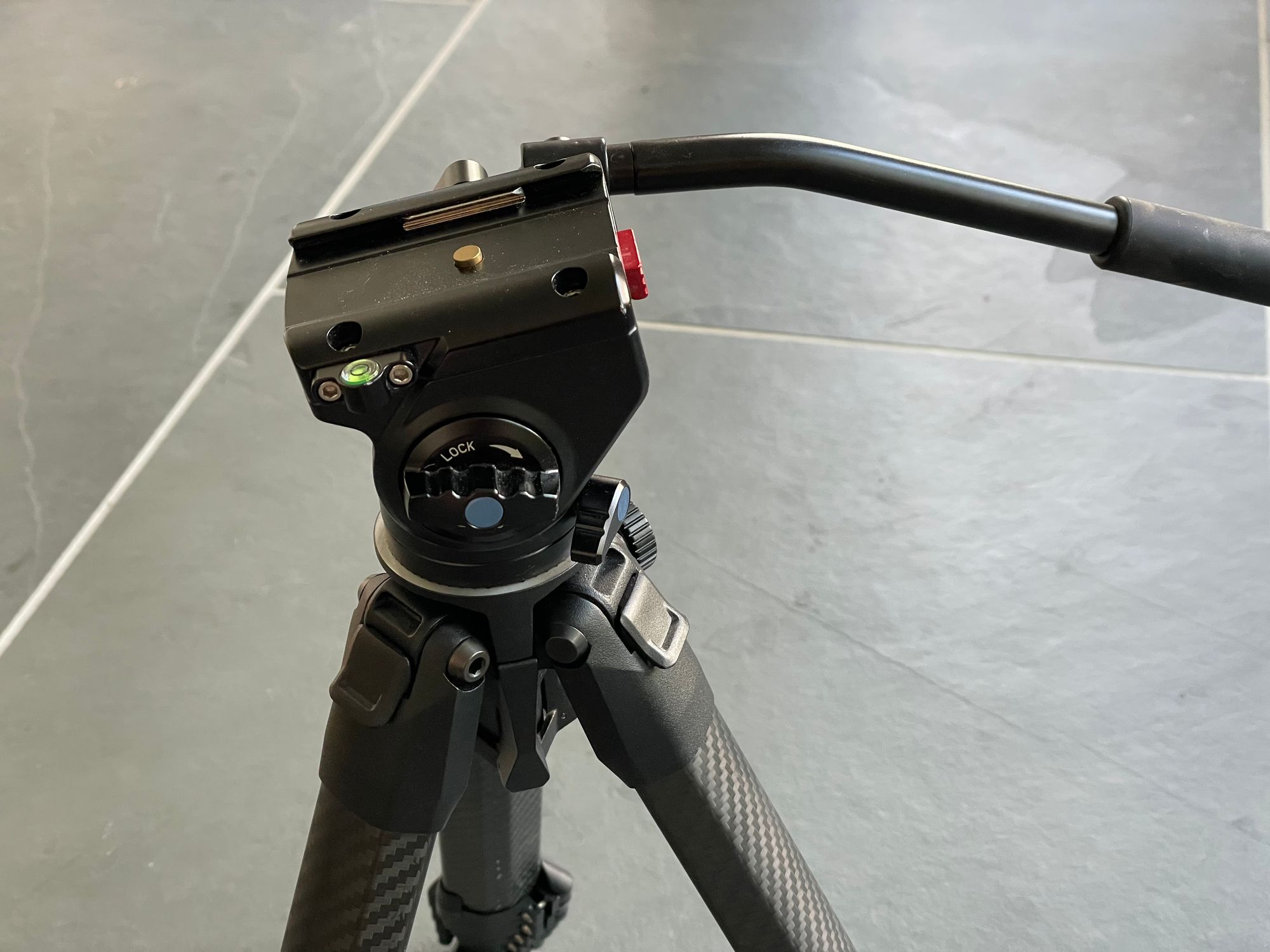
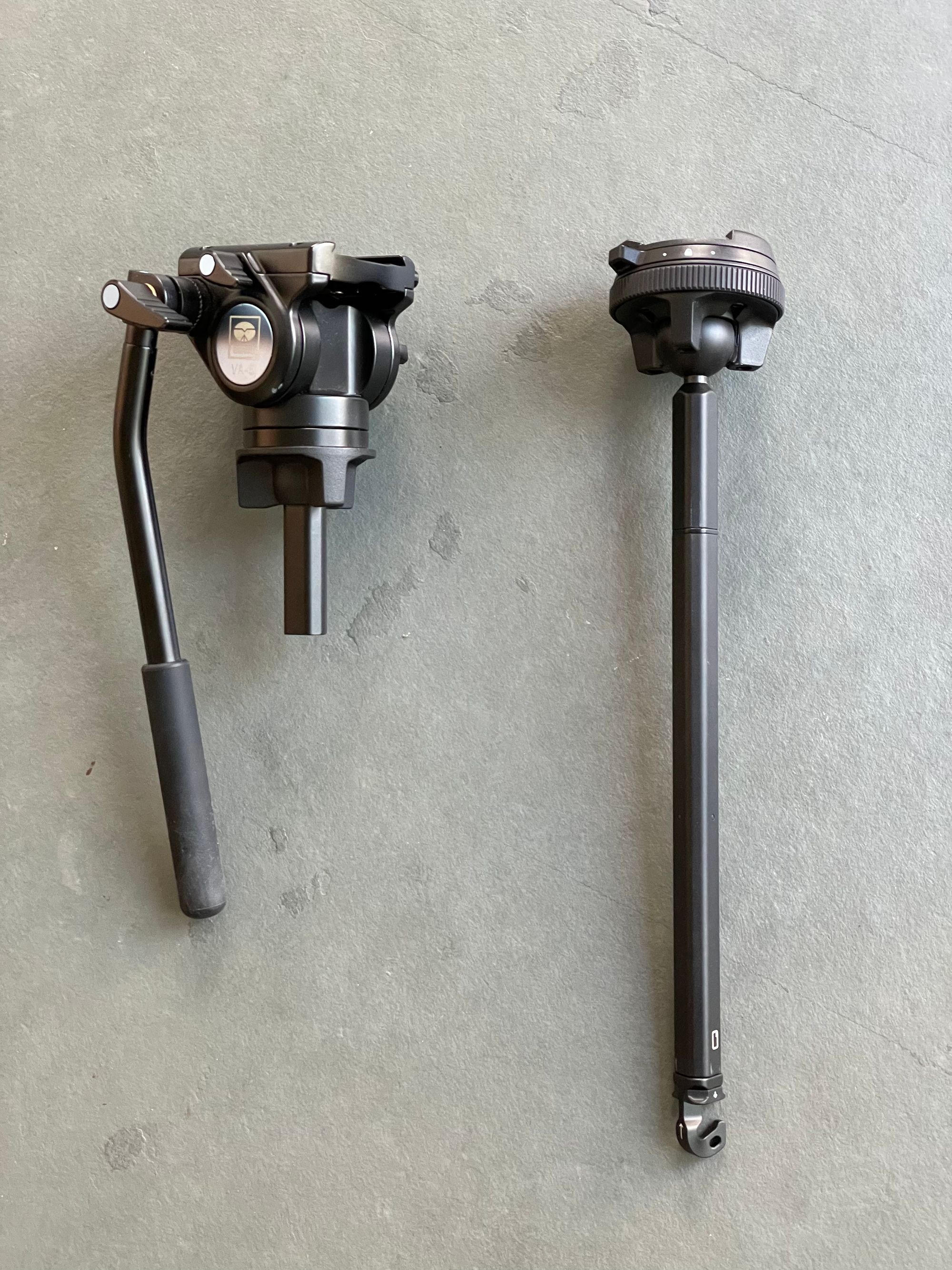
So, what’s it like in the field?
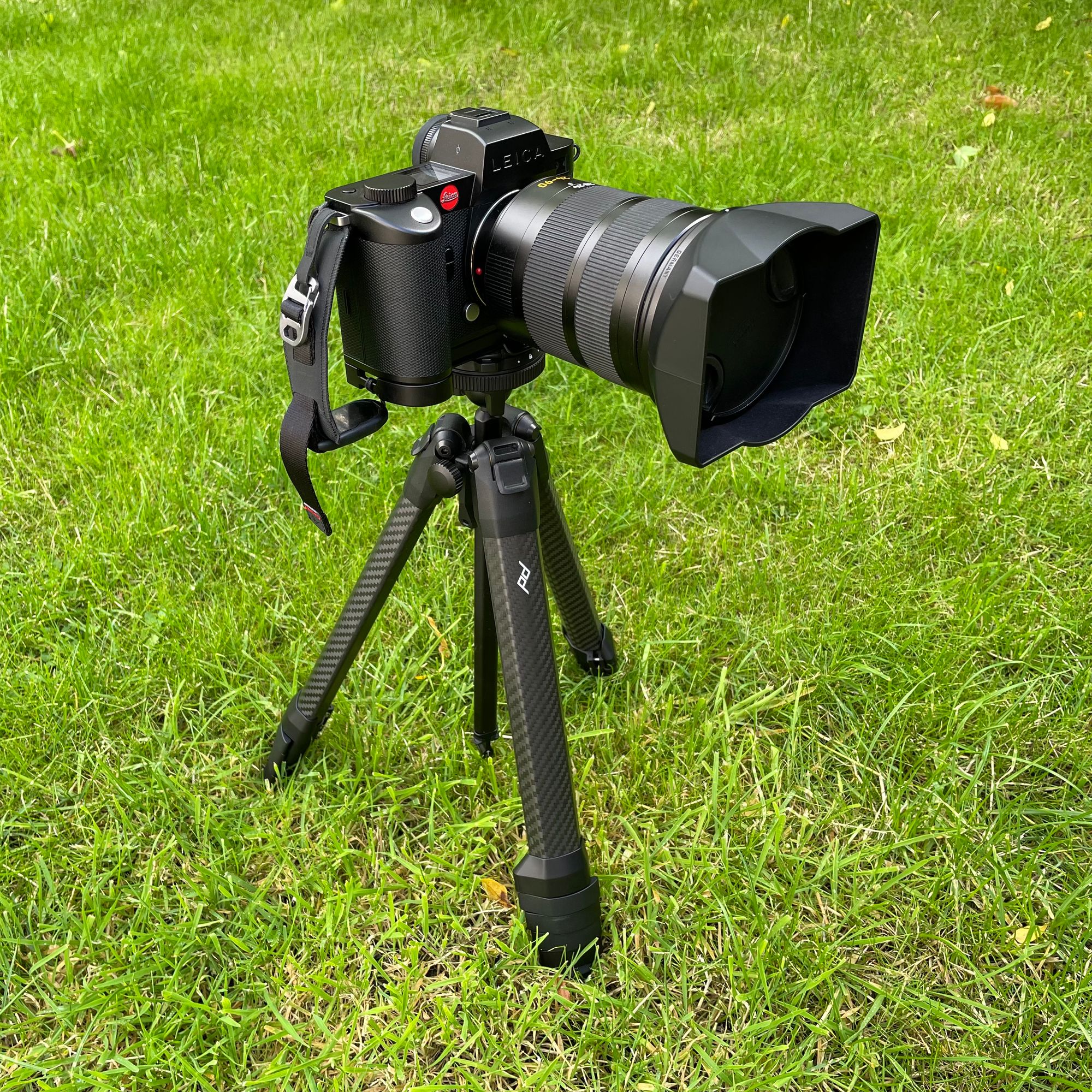
The short answer is that it’s surprisingly good. The compromises used to keep the size and weight down aren’t deal-breakers. The carbon fiber model is comparatively stiff. It’s not as rigid as, say, my RRS carbon tripod but, then again, it’s about a third of the size when packed. I’ve found myself using the tripod in more and more places. The sheer portability is an enormous plus. It weighs less than a good deal of my larger lenses and will quite happily strap to the side of a backpack without immediately turning the pack into a tripod-bag-plus-storage. Cycling with the Travel Tripod is a no-brainer, which is enormously helpful.
It’s a great size for the original 10L Peak Design Everyday Sling, which is my default day bag. The original 10L bag had external straps on it, which just happen to be ideal for strapping the Travel Tripod on to the bag. Sadly, newer versions of this bag don’t have the straps.
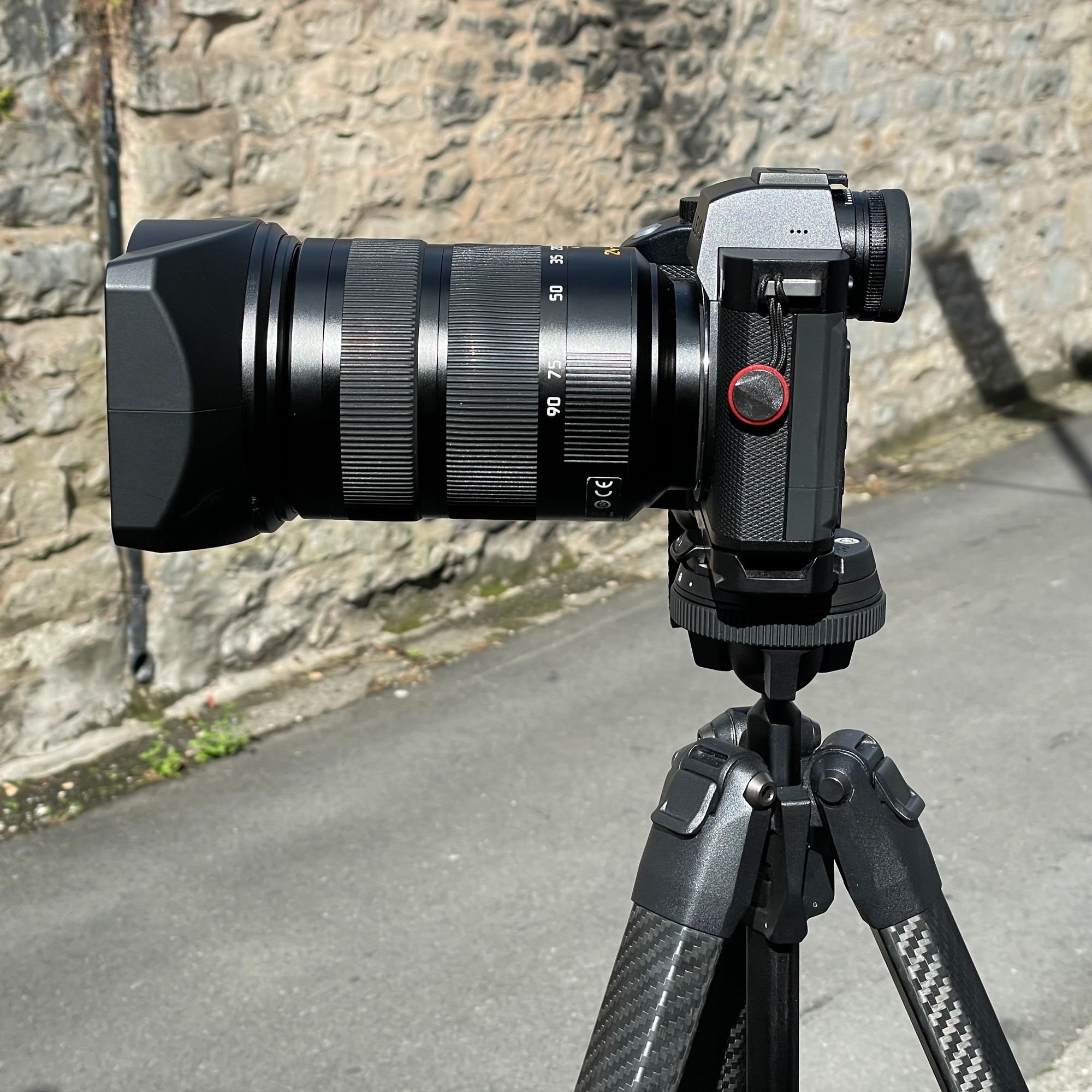
Of course, there’s no point in it being portable if it can’t support your camera and lenses when you get there. In this area, it’s really surprised me. I’ve shot the Leica SL2 and 24-90mm Vario-Elmar on it a lot. That’s a pretty solid, meaty combination, and it’s been just fine. It’s a lightweight tripod, so you do have to be aware when working with it, but that usually just means being sure to have the center of gravity balanced correctly on uneven ground or when working in high winds. There is a hook on the bottom of the center column, but I’ve seldom used it.
I used it repeatedly with the Leica SL2 to shoot Aurora Borealis on the frozen helideck of a Hurtigruten ship during Norwegian winter nights. Temperatures were often well below -20C in the wind. The tripod was an absolute champ; easy to use with gloves (there’s absolutely no way I’m taking gloves off in those temperatures) and not a hint of binding. The leg clamps were smooth to use, even when coated in ice. The slight flex in the carbon fiber was useful on-board too; the vibration from the ship’s engines were typically absorbed (and the vibrations were obvious in a cup of coffee placed on deck). I was fully prepared to be clenching my teeth at the compromises involved in carrying a travel tripod, but there were really no operational downsides.
As an experiment, I’ve also shot the SL2 and Sigma 150-600mm together on it. I’d normally use my Wimberely gimbal head and aluminum Manfrotto for this, but I decided to try using the Travel Tripod as a glorified monopod. I kept the head fairly loose and steadied the lens with a hand on top. Of course, IS was enabled. The results were excellent, and it’s a combination I’d consider using again if I had to walk large distances to get on-site. With the tripod collapsed to about half-height, it was easy to track and photograph wildlife, using the Sigma 150-600mm from a sitting position.
The primary downside with the Travel Tripod is that it’s not cheap. It's not cheap at all, especially in the UK and if you want the carbon fiber version. However, it’s turned out to be a remarkably useful tool. As unsentimental as I am about tripods, I’d be really upset to lose my Peak Design Travel Tripod. It’s become a continual companion, especially on days when I’m not 100% sure whether I need a tripod or not.
And the only useful tripod is the one you actually have with you.
